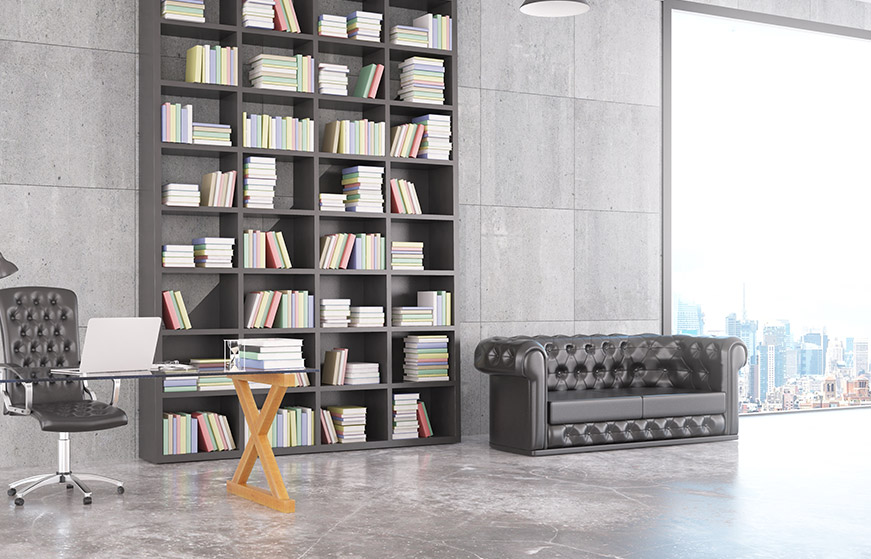
Innovations
Sintex Industries Limited, an Indian organisation with over $1 billion annual revenue flowing in from national and international operations. With its headquarters in Kalol, Gujarat in India, it has 18 manufacturing plants in Asia, 17 in Europe and 3 in USA. It also has subsidiaries in 9 countries across 4 continents.
The Group was incorporated as Bharat Vijay Mills Limited in 1931 and was renamed Sintex Industries Limited in 1995. Around the same time, it modernised and expanded its textile unit, and set up a structured yarn-dyed fabric business. One of the most respected business groups today, Sintex has established itself as a force to reckon with.
‘Active Thinking’ to create low cost dwellings for the
masses
Thought starter
Sintex has been doing its bit to address the gap in the Indian housing sector, especially in remote areas. Its prefabs found great acceptance for rural classrooms, military bases, police booths and other such applications but met with limited success as far as addressing “housing needs” are concerned.
The company realized that the barrier lay in the consumer’s mind. Consumers were not willing to accept a factory made house as their home (prefab parts are made in a central factory and the parts are joined together at the site). The age old convention of erecting a house on site was taken as hygiene.
Looking at this, we chanced upon an idea – can we make functional, strong, inexpensive houses for the masses using all our knowledge in building prefab structures which use factory made panels and slabs?
And there was no looking back!
Challenges
There were two major challenges. One: the strength requirements were of a different kind in a permanent structure and we had to look beyond using plastic and concrete (which were largely used in prefabs). And two: we believed that the new technology should reduce dependence on human skills as it was critical to bring down the cost of construction.
Action
Over the years we had developed a knowledge base of optimizing benefits from all
materials. We added galvanized steel to plastocrete (plastics & concrete) and developed a polymer system that was strong enough for such projects. We believed in functionality and scale, so developed standardized plans that would ensure quick construction reducing cost and dependence on human skills.
Results
These buildings take one-fourth the time to get completed, are strong enough to withstand high windspeeds (150km/hr) & earthquakes, cost half as much, do not require any maintenance, look good and are eco friendly.
The first project is coming up on the outskirts of Ahmedabad and we have extremely healthy order bookings from various governments, municipal bodies and corporates.


‘Active Thinking’ to minimize T&D losses and theft of electricity
Thought starter
In early 2000s, the government declared that all form of electricity supply – regular,
subsidized or free would have to be measured. It was done in the direction of minimizing T&D losses and theft of electricity.
However, there was one area where the most efficient electricity boards had limitations. The electric meters of the day were not tamper proof. There was a simple solution to this problem – tamper proof meter boxes, but the scale of implementation demanded a unique approach.
In a typical Sintex way of working, we took that approach.
Results
AEC, which was already an efficient electricity company made an additional gain of 4% in revenues by reducing their T&D losses. It was easier for us to convince other electricity boards after the pilot. Rajasthan Electricity Board (REB) has already placed an order and we are in advance talks with other boards as well.

‘Active Thinking’ to educate rural India
Thought starter
Gujarat government’s vision, ‘education for all’ was getting hindered by lack of infrastructure. The Government needs were much more than what actually could be installed through conventional processes.
The conventional processes have their limitations and could only install 800 to 900 classrooms per year which were insufficient to fulfill Government’s requirement of 42,000 classrooms.
Sintex required no second invitation to utilize its expertise and experience to install 4000 to 5000 classrooms per year to make the vision of Government a reality.
Challenges
The main challenge was to install such structures on raw ground. Keeping in mind the seismic conditions of the land in Gujarat, these structures needed to be earthquake proof, non-fatal, durable and strong. Another challenge was to install them quickly so that more and more students could benefit from the program.
Action
Through our research and experience Sintex had developed a strong know how on the use of plastics. With little modification we were able to strengthen the structures made of plastics. As a result of which Sintex engineered 10,000 prefabricated schoolrooms for the most remote areas of Gujarat that not only can be installed on raw ground within a week,

